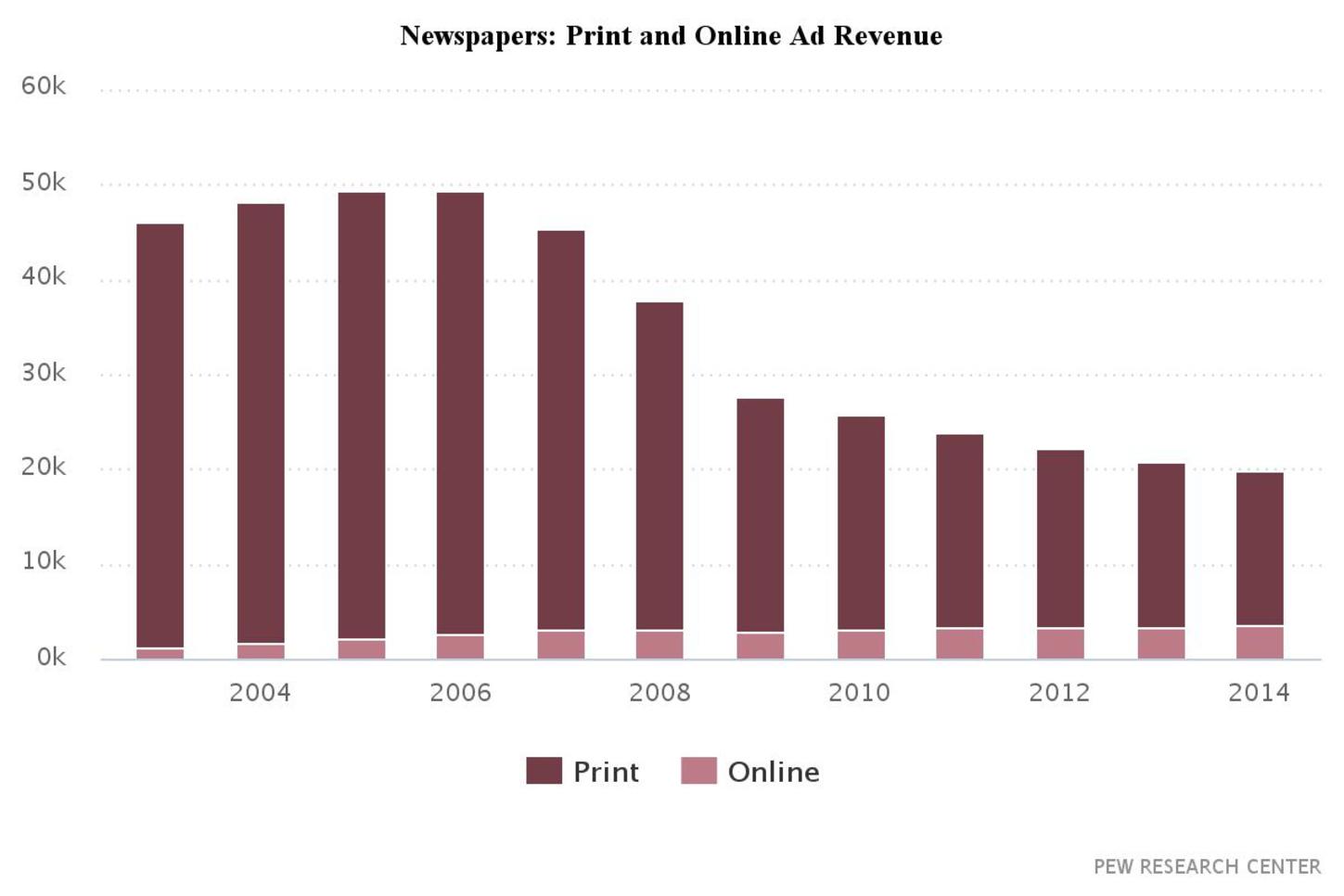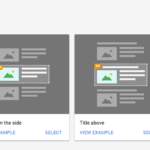For print media, staying profitable was always a matter of simple math, standard ad and subscription rates made it far easier to make revenue projections based on the existing subscriber base. There were, few, if any technical challenges or bottlenecks. Things were just simpler.
Enter the world wide web.
The Internet Changed How Media Works
Now, everyone with a connection can get their news online, the overabundance of information meant that publishers found it harder to maintain any kind of competitive advantage. Legacy media companies had no choice but to adapt to the changing landscape around them.
This shift was by no means an easy task, the technical wherewithal required to stay profitable online far exceeds that required to run a printing press, the latter being around for centuries, while the the former being constantly disrupted by new web technology.
The problem for newspapers – and their owners – is not that news has suddenly become unfashionable, it’s that making money out of news is proving increasingly difficult. The reasons for the collapse in profits are simple: for more than 100 years newspapers controlled the news and advertising markets, but digital technology has changed everything. Staples such as classified advertising, property and cars went quickly online. Newspapers were too slow to react to classified sites such as CraigsList and Gumtree – and lost the market.

Monetizing digital media is hardly easy or straightforward. Banner blindness, falling clickthrough rates, and ad blocking are just a few things that are eating into the revenue potential of digital publishers; not counting factors such as accessibility and competition.
While these odds pile up against digital media, the channels of earning reduced as display ads were the only way to monetize—there was no way to offer subscriptions to readers, until much later anyway. Thankfully, digital publishers now have the technology to replicate the subscription model on the internet.
Coming back to the original question, what is a paywall? Paywalls are a way for digital publishers to restrict access to their content and offer paid subscriptions to users.
Types of Paywalls
Hard paywalls: A hard paywall is when a publisher requires a user to subscribe before accessing any online content, it is one of the riskiest paywall options because the publisher stands to lose a majority of its audience and visibility. Case in point, The Times has a hard paywall, and while it may have increased its revenue, its traffic has decreased by 60%. In fact, Wikipedia founder Jimmy Wales has gone on record to say that The Times has “made itself irrelevant”.
Still, there are use cases for a hard paywall: It can work if you target a specific niche and/or already dominate your market. Think of New Scientist, another website that has a hard paywall, with content that is distinctive enough to be able to make it work.
Soft paywalls: Also known as “metered paywalls”, these allow users to view a specific number of articles before asking them to subscribe for full access, with the quota refreshed every 30 days. This is the model most commonly employed by legacy media companies. Soft paywalls strike a good balance between adding additional revenue without overtly alienating the entire readership. Besides a relatively lower decline in pageviews, reader retention is also typically higher in comparison to hard paywalls.
Most publishers with hard paywalls are reporting retention rates as low as 15-20%. Retention rates for newspapers using metered paywalls average 58.5%, with some reporting as much as 90% reader retention.
Some publishers also use a combination paywall where users are allowed free access to selected content, with a set of premium content being protected by a hard paywall.
Since the media ecosystem is so complex and varied, there are no set formulas for what will and will not work for everyone, so the implementation happens on a case-by-case basis depending on the uniqueness of content, market share of the publisher, and audience demographics, among other things.
Should You Implement a Paywall?
A hard paywall is probably not the right solution for everyone, but you could set up a soft paywall with limited access to content with settings that work for you. Also, it is recommended to conduct a thorough research on different paywall services. If you find the sweet spot for your publication, you could potentially increase your overall revenue without any significant impact on casual readership numbers or display ad revenues.
Keep in mind though that users generally don’t view paywalls favourably, according to a survey conducted by Canadian Media Research Consortium on 1700 people, 92% of participants who read the news online would rather find a free alternative than pay for their preferred site (in comparison to 82% of Americans), while 81% stated that they would absolutely not pay for their preferred online news site.
To sum up, paywalls can be great revenue strategy, with a couple of conditions: First, your publication is already somewhat established and has a sizeable readership, and second, you must also be convinced that at least a certain percentage of your readers will be willing to pay to access your content; failing these, the entire exercise will likely be a lesson in frustration.

Shubham is a digital marketer with rich experience working in the advertisement technology industry. He has vast experience in the programmatic industry, driving business strategy and scaling functions including but not limited to growth and marketing, Operations, process optimization, and Sales.







